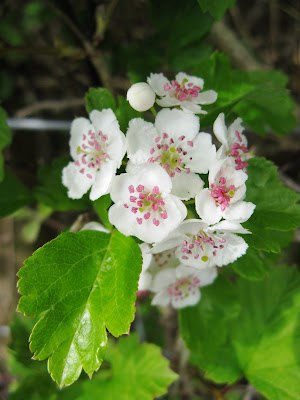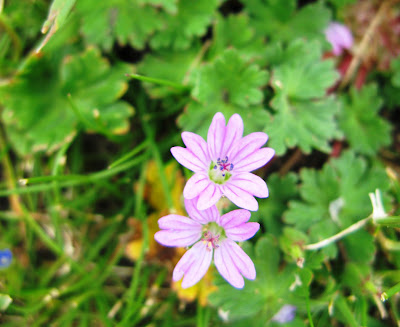












 In Bynea, the Common mouse-ear (Cerastium fontanum); Hedgerow cranesbill (Geranium pyrenaicum); Marsh cranesbill (Geranium palustre) and Meadow buttercup (Ranunculus acris) were all in flower. There was also lots of activity from large (Bombus terrestris) and small (Bombus pratorum) bumble-bees. In Penclacwydd, the Bluebell (Endymion non-scriptus); Silverweed (Potentilla anserina) and Hawthorn (Crataegus monogyna) were in bloom. There were lots of mating St Mark's flies (Bibio marci) buzzing around a little late for their name day. In Loughor, Wild turnip (Brassica rapa); Sweet allison (Lobularia maritima); Rock cinquefoil (Potentilla rupestris) and Ramsons (Allium ursinum) were out and about.
In Bynea, the Common mouse-ear (Cerastium fontanum); Hedgerow cranesbill (Geranium pyrenaicum); Marsh cranesbill (Geranium palustre) and Meadow buttercup (Ranunculus acris) were all in flower. There was also lots of activity from large (Bombus terrestris) and small (Bombus pratorum) bumble-bees. In Penclacwydd, the Bluebell (Endymion non-scriptus); Silverweed (Potentilla anserina) and Hawthorn (Crataegus monogyna) were in bloom. There were lots of mating St Mark's flies (Bibio marci) buzzing around a little late for their name day. In Loughor, Wild turnip (Brassica rapa); Sweet allison (Lobularia maritima); Rock cinquefoil (Potentilla rupestris) and Ramsons (Allium ursinum) were out and about.
%20mating%20NWCW.jpg)


No comments:
Post a Comment